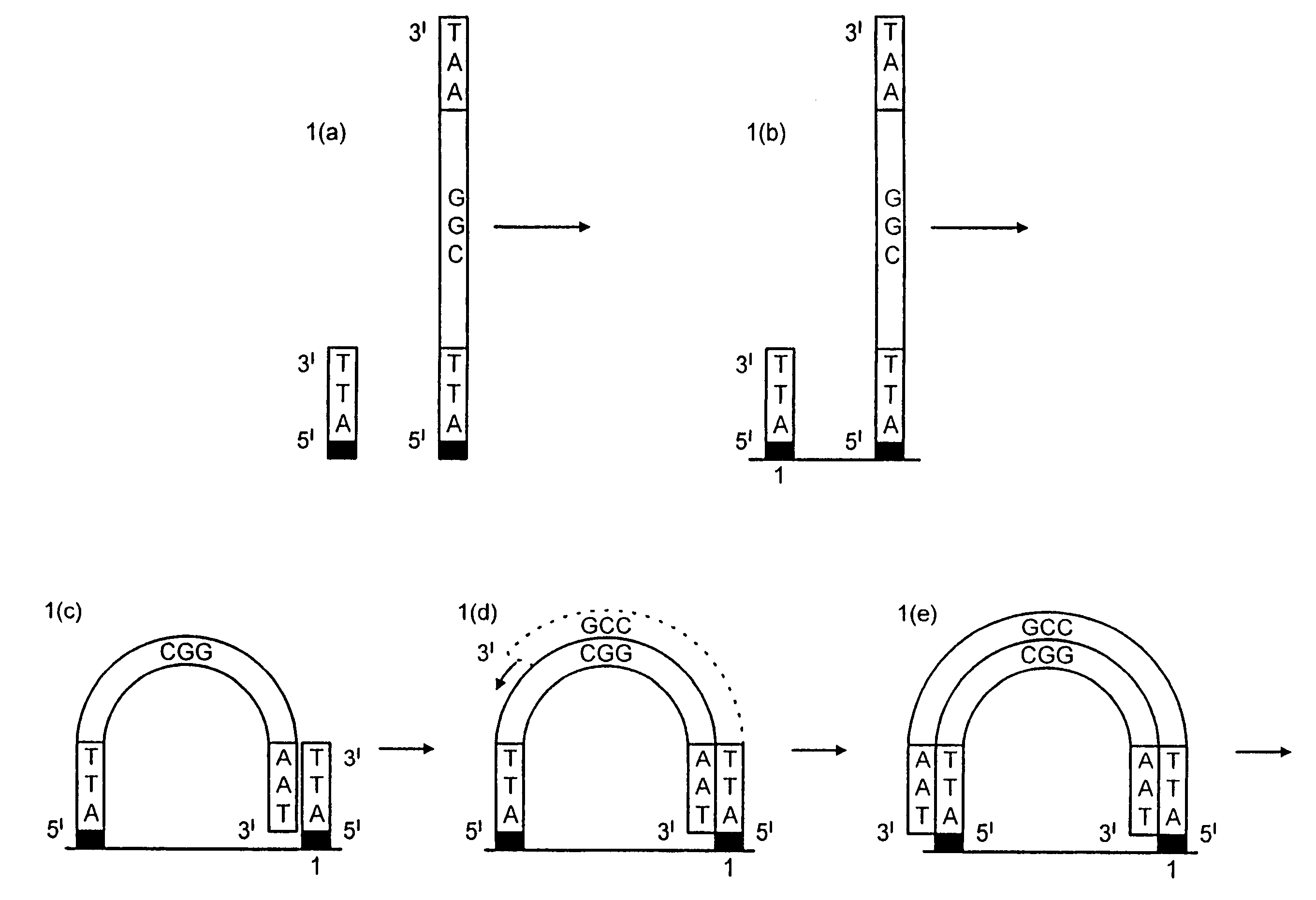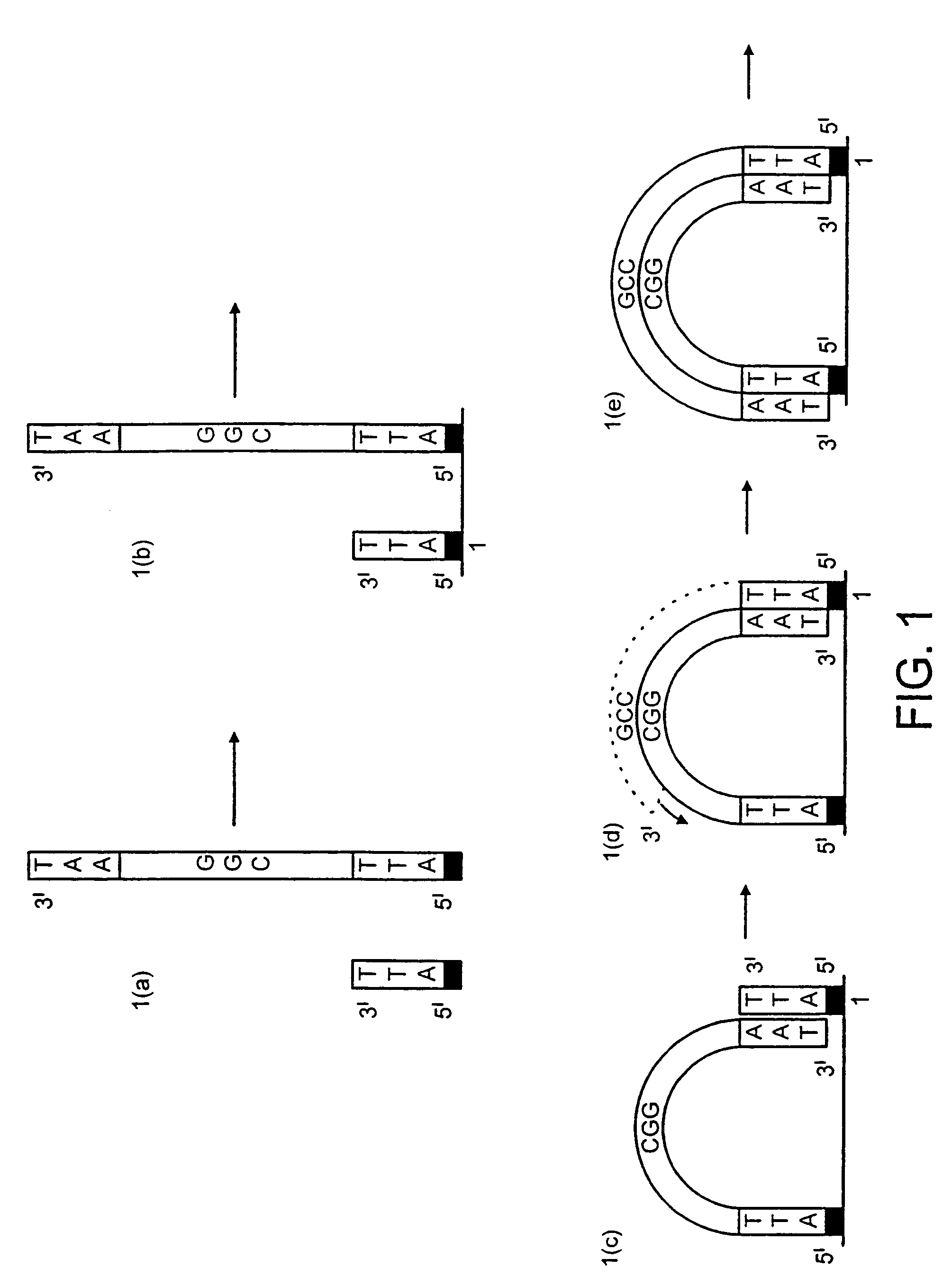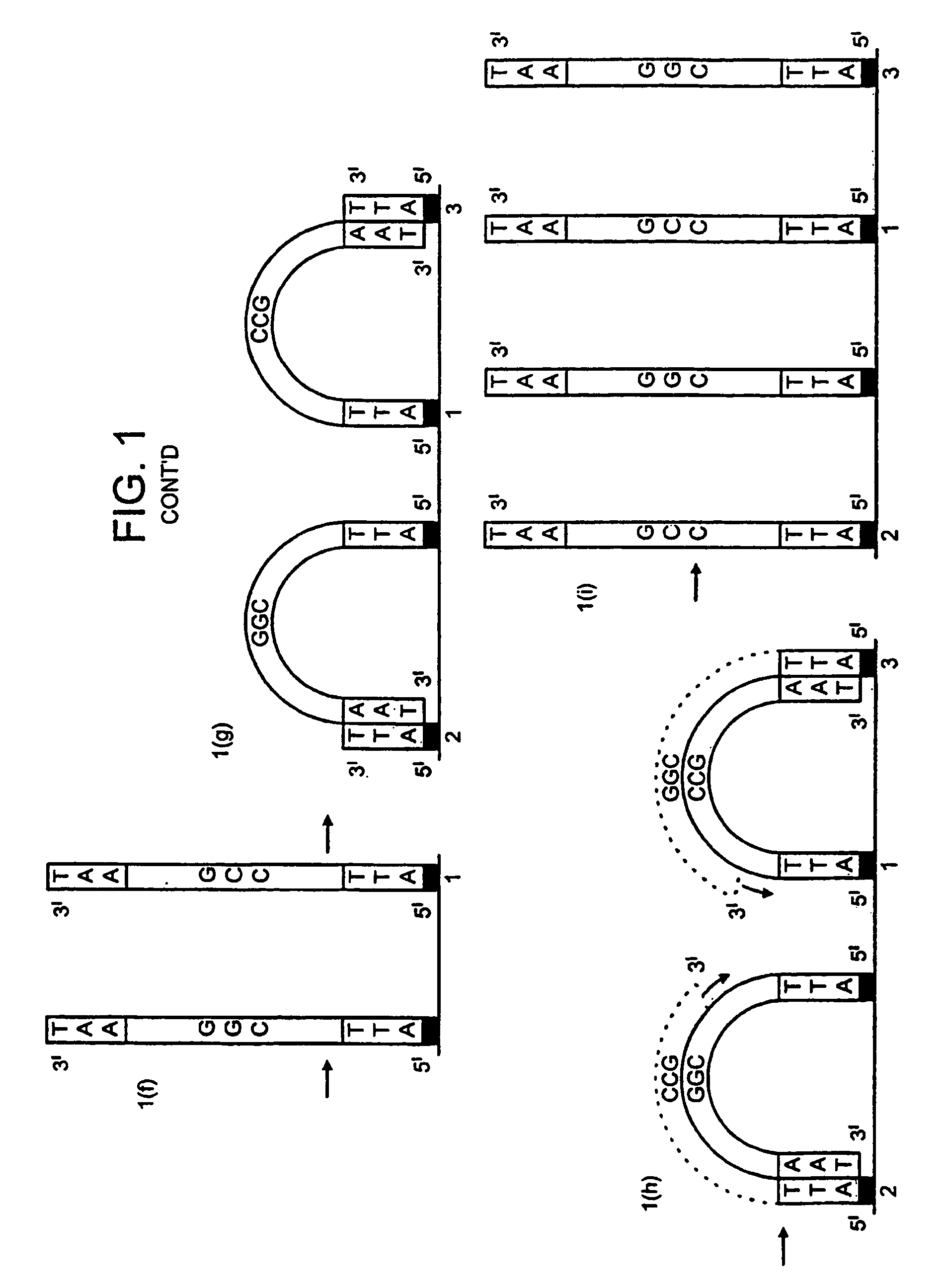Methods of nucleic acid amplification and sequencing
- Summary
- Abstract
- Description
- Claims
- Application Information
AI Technical Summary
Benefits of technology
Problems solved by technology
Method used
Image
Examples
Example
Example 1
Preparation of DNA Templates Suitable for the Generation of DNA Colonies
[0159]DNA colonies have been generated from DNA templates and colony primers. The term “colony primer sequence” as used herein refers to a sequence corresponding to the sequence of a colony primer and is elsewhere sometimes referred to as “oligonucleotide sequence Y” or “oligonucleotide sequence Z′”.
[0160]The properties of the colony primers have been chosen based on a selection for oligonucleotide primers that show little non-specific nucleotide incorporation in the presence of heat-stable DNA polymerases. The colony primers, CPα (5′-pCACCAACCCAAACCAACCCAAACC) (SEQ ID NO: 2) and CPβ (5′-pAGAAGGAGAAGGAAAGGGAAAGGG) (SEQ ID NO: 1) have been selected due to their low incorporation of radiolabeled α32P-dCTP in the presence of a stable DNA polymerase (AmpliTaq, Perkin Elmer, Foster City, Calif.) in the standard buffer and under thermocycling conditions (94° C. for 30 seconds, 65° C. for 1 minute, 72° C. for ...
Example
Example 1a
Preparation of a Random DNA Template Flanked by a Degenerate Primer
[0170]A 3.2 Kb DNA fragment was taken as a model system to demonstrate the feasibility of colony generation from random primer PCR amplification. This strategy can be applied to sequencing of DNA fragments of approximately 100 Kb in length and, by combination of fragments, to whole genomes. A fragment of DNA of 3.2 Kb was generated by PCR from human genomic DNA using PCR primers TP1 5′-pGAGGCCAGAACAGTTCAAGG (SEQ ID NO: 3) and TP2 5′-pCCTGTGACAAGACGACTGAA (SEQ ID NO: 4), as described in example 1. The 3.2 Kb fragment was cut in smaller fragments by a combination of restriction enzymes (EcoR1 and HhaI, yielding 4 fragments of roughly 800 bp). The cut or uncut fragment DNAs were then mixed with the degenerate primer, P252 (5′-pTTTTTTTTTTISISISISISIS (SEQ ID NO: 17), where I stands for inosine (which pairs with A, T and C) and S stands for G or C) and covalently coupled to the Nucleolink wells (Nunc, Denmark). ...
Example
Example 2
Covalent Binding of DNA Templates and Colony Primers on Solid Support (Plastic) and Colony Formation with a Colony Primer
Covalent Binding of Template and Colony Primer to the Solid Support (Plastic)
[0171]A colony primer (CP2,5′-TTTTTTTTTTAGAAGGAGAAGGAAAGGGAAAGGG) (SEQ ID NO: 6), phosphorylated at its 5′ terminus (Microsynth GmBH, Switzerland), was attached onto Nucleolink plastic microtitre wells (Nunc, Denmark) in the presence of varying doses of Template A (prepared as described in example 1). Eight wells were set up in duplicate with seven 1 / 10 dilutions of template with CP2, starting with the highest concentration of 1 nM.
[0172]Microtitre wells, to which CP2 colony primer and the template are covalently bound were prepared as follows. In each Nucleolink well, 30 μl of a 1 μM solution of the colony primer with varying concentrations of template diluted down from 1 nM in 10 mM 1-methyl-imidazole (pH 7.0) (Sigma Chemicals) was added. To each well, 10 μl of 40 mM 1-ethyl-3-...
PUM
| Property | Measurement | Unit |
|---|---|---|
| Molar density | aaaaa | aaaaa |
| Molar density | aaaaa | aaaaa |
| Molar density | aaaaa | aaaaa |
Abstract
Description
Claims
Application Information
 Login to View More
Login to View More - R&D
- Intellectual Property
- Life Sciences
- Materials
- Tech Scout
- Unparalleled Data Quality
- Higher Quality Content
- 60% Fewer Hallucinations
Browse by: Latest US Patents, China's latest patents, Technical Efficacy Thesaurus, Application Domain, Technology Topic, Popular Technical Reports.
© 2025 PatSnap. All rights reserved.Legal|Privacy policy|Modern Slavery Act Transparency Statement|Sitemap|About US| Contact US: help@patsnap.com



